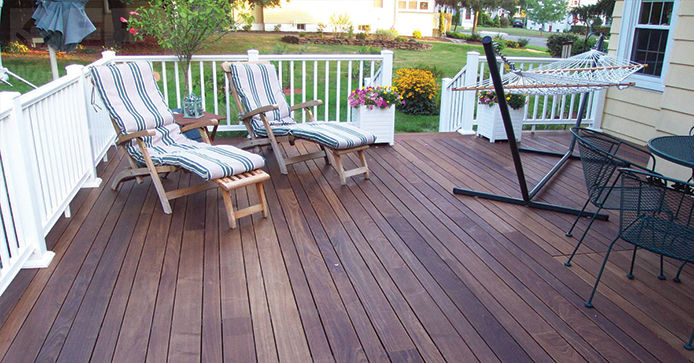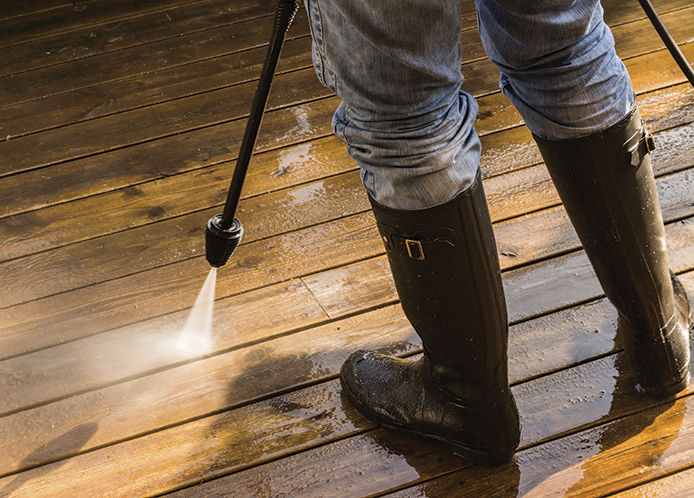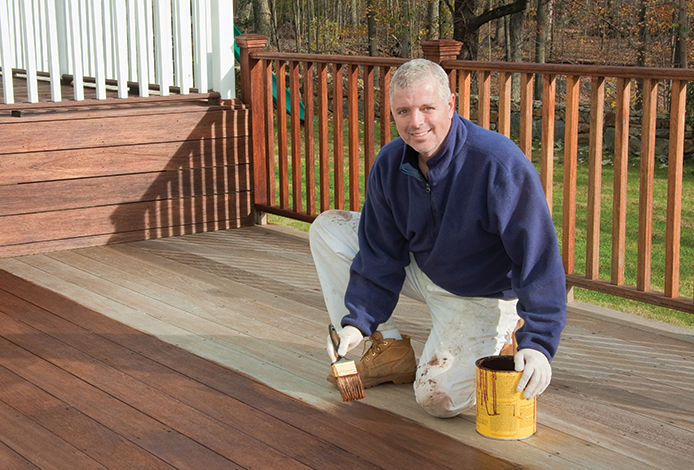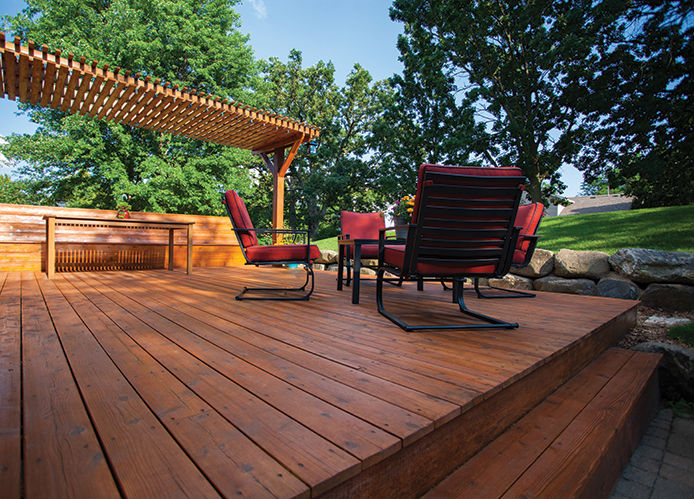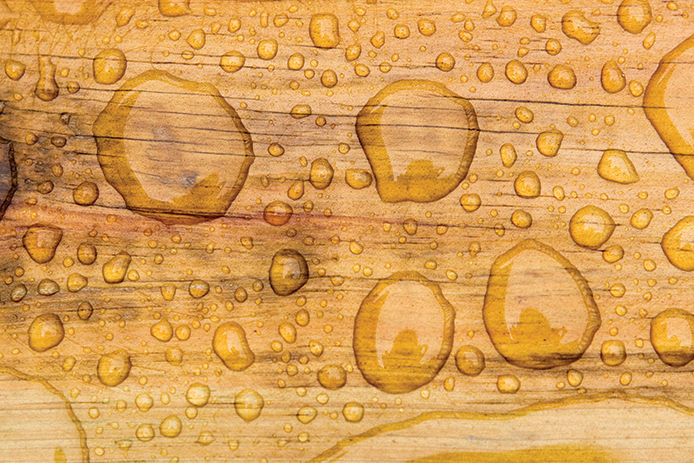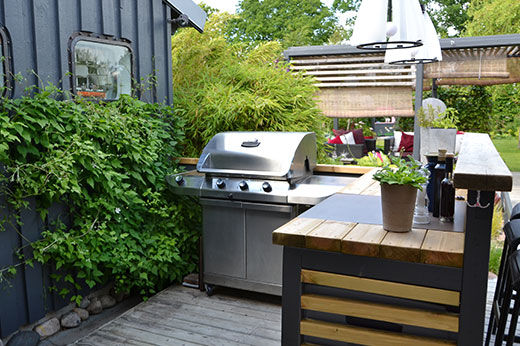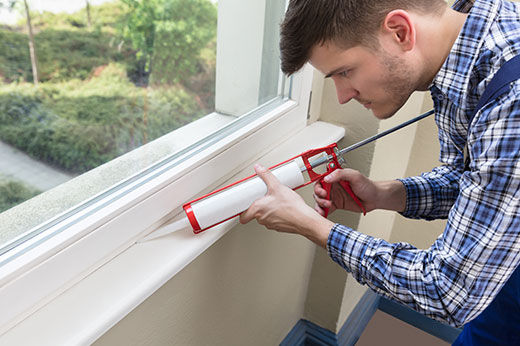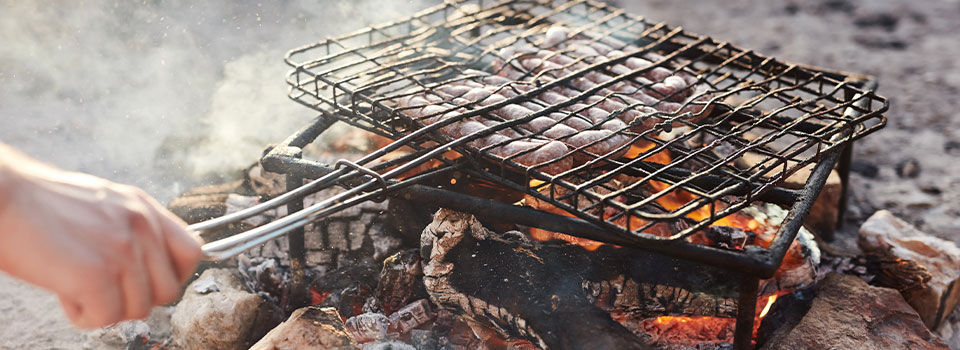Staining a deck starts with preparation. Before you begin, you will want to completely clear all furniture, plants, and pots from the deck surface. The deck floor should be completely clear, so you'll have ample room to work. Gather your supplies and make sure that you're ready to start staining the deck. You may want to use plastic sheeting or drop cloths to cover the concrete leading up to the deck or any other areas that you don't want to accidentally stain.
Step 1: Clean the Deck
Before you start to stain your deck, you need to clean the deck thoroughly. First, use a broom to brush off the deck. As you sweep, look for any popped nails or areas of concern that you might need to address before you start to stain. Most popped nails can be driven back in with a hammer. Sand any splinters too. As you clean the deck, it’s also a good time to repair or replace any damaged deck boards.
Once your deck is in good condition, you should apply deck cleaner and allow it to sit for 15 minutes on the surface of the deck. Read the instructions for your particular cleaner, but most brands require that the deck stays wet as the cleaner soaks into the surface. If there are areas where the old stain has chipped or peeled, it's a good idea to sand it off so you're working with a clean surface.
After the cleaner has set, rinse the wood with a garden hose or a power washer (on the lowest setting). If you’re using a power washer, choose a psi of 1200-1400 with a 45° tip on the pressure washer. If you need help deciding on the best pressure washer to stain your deck, don’t miss our Pressure Washer Buying Guide. No matter how you clean, be sure to spray along with the woodgrain to avoid damaging the surface of your deck while pressure washing.
Step 2: Test a Spot
You should only stain the deck when the wood surface is completely dry. Otherwise, the deck stain won't properly adhere or last. Once you've given the deck time to dry completely, you should test a small inconspicuous area to ensure you like the color of stain you've chosen. Let the small area dry before you apply your fresh coat of stain to the entire deck.
Step 3: Prepare the Stain
If you plan to cover a large area, mix all the stains together—this will ensure that the color is consistent across the entire deck. For new decks, you'll need one coat of an oil-based deck finish. Older decks may require multiple coats to get the best coverage and look.

